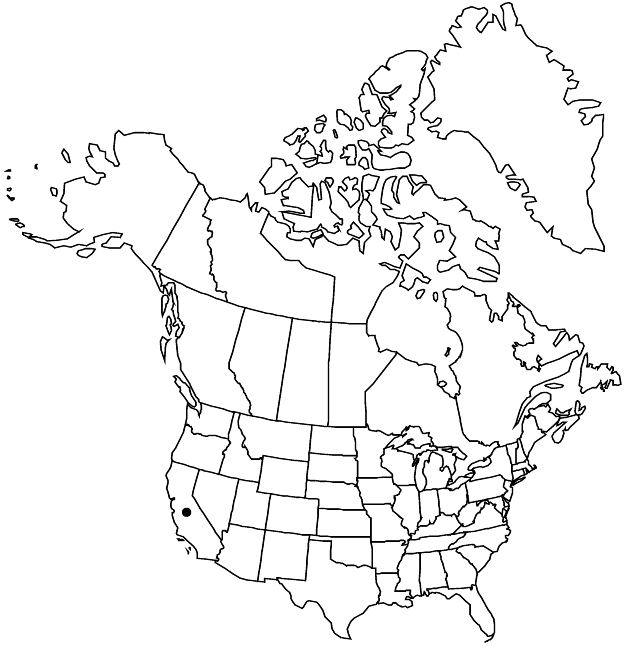familyMalvaceae
subfamilyMalvaceae subfam. Malvoideae
genusEremalche
speciesEremalche parryi
subspeciesEremalche parryi subsp. kernensis
Eremalche parryi subsp. kernensis
Phytologia 72: 51. 1992.
Conservation concernEndemic
Basionym: Eremalche kernensis C. B. Wolf Occas. Pap. Rancho Santa Ana Bot. Gard. 2: 66, fig. 18. 1938
Synonyms: Malvastrum kernense (C. B. Wolf) Munz
Treatment appears in FNA Volume 6. Treatment on page 248.
Pedicels usually 1–5 cm in flower; involucellar bractlets (3–)4–7(–10) mm in bisexual flowers, (2.5–)4–6(–8) mm in pistillate flowers. Flowers bisexual or pistillate; petals white or mauve. Bisexual flowers: calyx 5–9(–10) mm, lobes 3.5–7(–8) × 1.7–3(–3.5) mm; petals 8–20(–25) mm, exceeding calyx. Pistillate flowers: calyx 4.5–7.5(–10) mm, lobes 3.2–6.5(–8) × 1.5–2.5(–3.5) mm; petals 5.5–13 mm, ± equaling to slightly exceeding calyx. Mericarps 9–13 in bisexual flowers, 13–19 in pistillate flowers. 2n = 20.
Phenology: Flowering late winter–spring.
Habitat: Eroded hillsides, alkali flats
Elevation: 60–1200 m
Distribution
Loading map...

Calif.
Discussion
Of conservation concern.
Subspecies kernensis occurs in the southernmost inner South Coast Ranges and the southern San Joaquin Valley in Kern and San Luis Obispo counties.
Selected References
Lower Taxa
None.